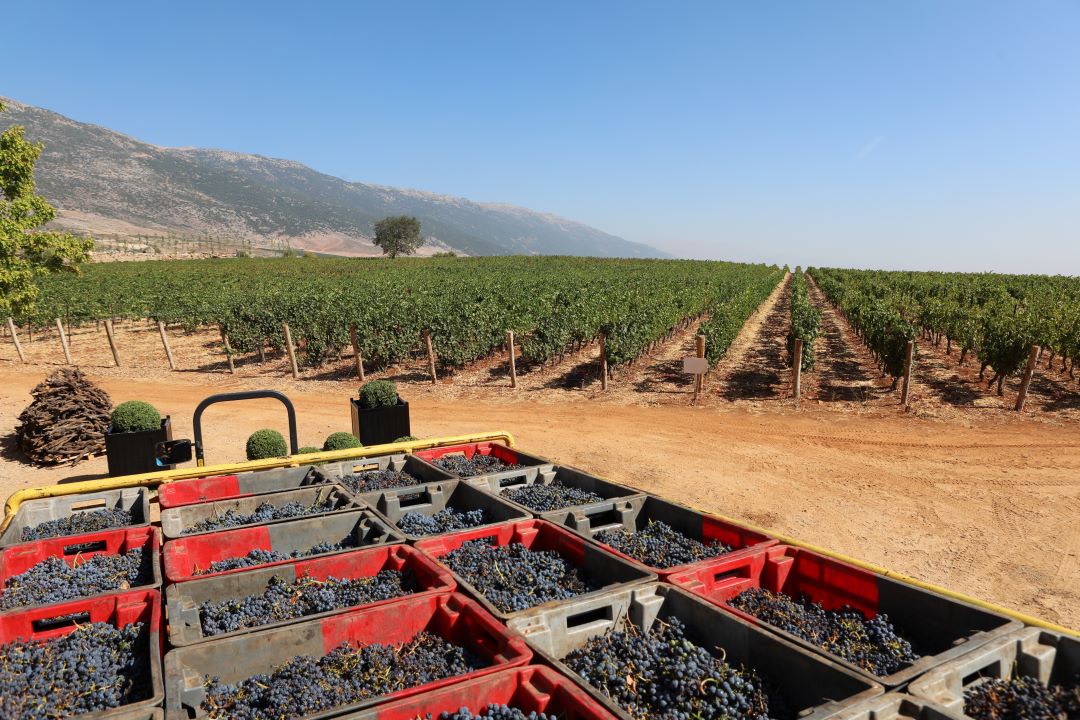Browse using the new Vinous website now. Launch →
Printed by, and for the sole use of . All rights reserved © 2015 Vinous Media
Middle East Update: Lebanon and Syria
BY NICOLAS GREINACHER | APRIL 9, 2025
This brief report highlights recent releases from Syria and Lebanon, focusing on Château Musar, Château Marsyas, Château Kefraya and Domaine de Bargylus. Lebanon currently cultivates approximately 3,000 hectares of vineyards, comparable in size to the AOC of Châteauneuf-du-Pape. The country produces around ten million bottles of wine annually, half of which are exported. However, the absence of state-level regulations often results in inconsistent quality, with many wines of a fairly basic caliber.
Harvest time at Château Marsyas.
Lebanon was under a French mandate from 1920 to 1943, and French influence remains deeply ingrained in its winemaking traditions. The country primarily cultivates Mediterranean red varieties such as Grenache, Mourvèdre, Cinsault and Carignan, alongside Bordeaux varieties like Cabernet Sauvignon, Merlot, Cabernet Franc and Petit Verdot. The most commonly produced white wines are Chardonnay, Viognier, Muscat, Sémillon and Sauvignon Blanc. There has also been a continuing focus on indigenous Lebanese grapes, such as Merwah and Obeideh.
Lebanon’s vineyards are concentrated in the Bekaa Valley, at the foothills of Mount Lebanon, where elevations reach around 1,000 meters above sea level. The region benefits from a Mediterranean climate, with dry summers and cool nights. Planting densities vary, with lower-end vineyards at approximately 2,500 vines per hectare, while top-quality producers often plant at more than double that density to enhance concentration and complexity. By contrast, Syria’s wine industry is far less developed. Domaine de Bargylus remains the only Syrian estate that exports wine, underscoring the country’s limited presence on the international stage.

Snow-covered vineyards at Domaine de Bargylus.
A recent tasting confirmed the strength of both countries’ red wines. While the selection of white wines was largely unremarkable, the reds stood out, particularly those with Syrah in the blend. Apart from Château Musar and the Satyr Cabernet Sauvignon, all the reds tasted for this small report contain a proportion of Syrah. The variety’s distinct spiciness neatly complements the black fruit and herbal notes characteristic of Cabernet Sauvignon. For further details on the producers featured in this report, readers will want to consult the respective producer profiles.
I tasted all the wines for this report at my Zurich office in February 2025.
© 2025, Vinous. No portion of this article may be copied, shared or re-distributed without prior consent from Vinous. Doing so is not only a violation of our copyright, but also threatens the survival of independent wine criticism.
You Might Also Enjoy
Cellar Favorite: 1960, 1974 and New Releases of Château Musar, Neal Martin, April 2023

